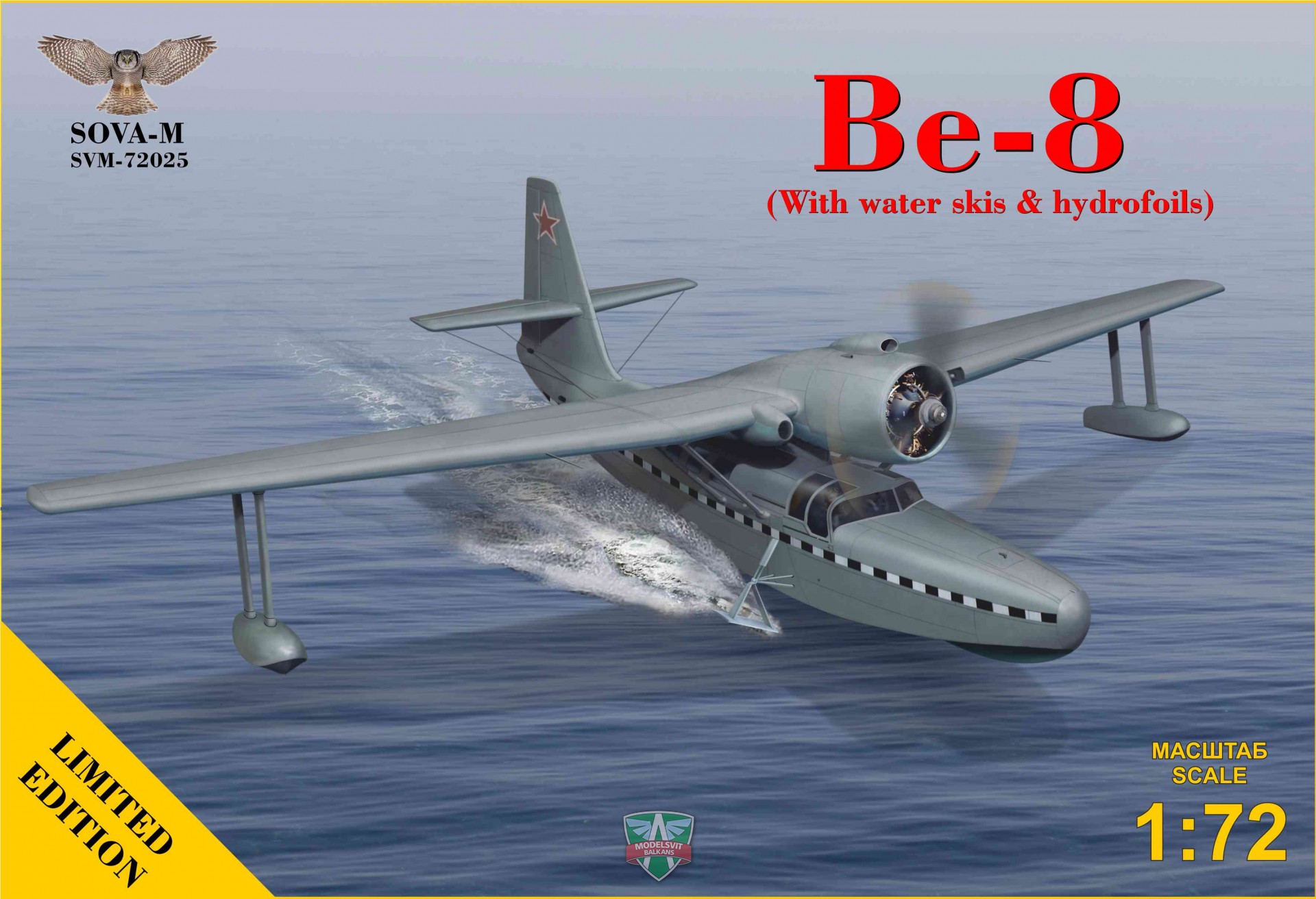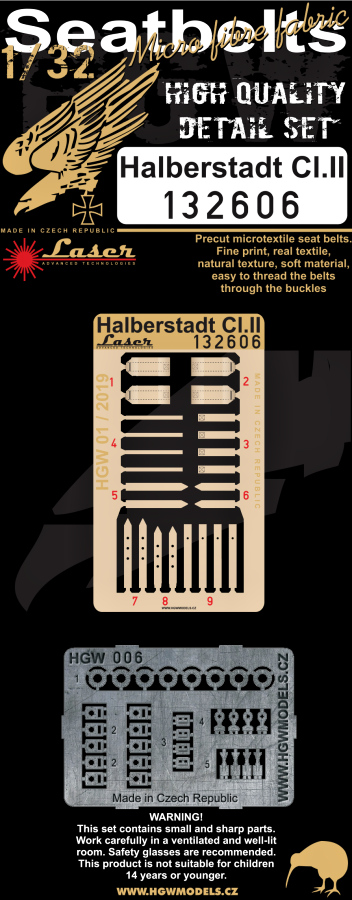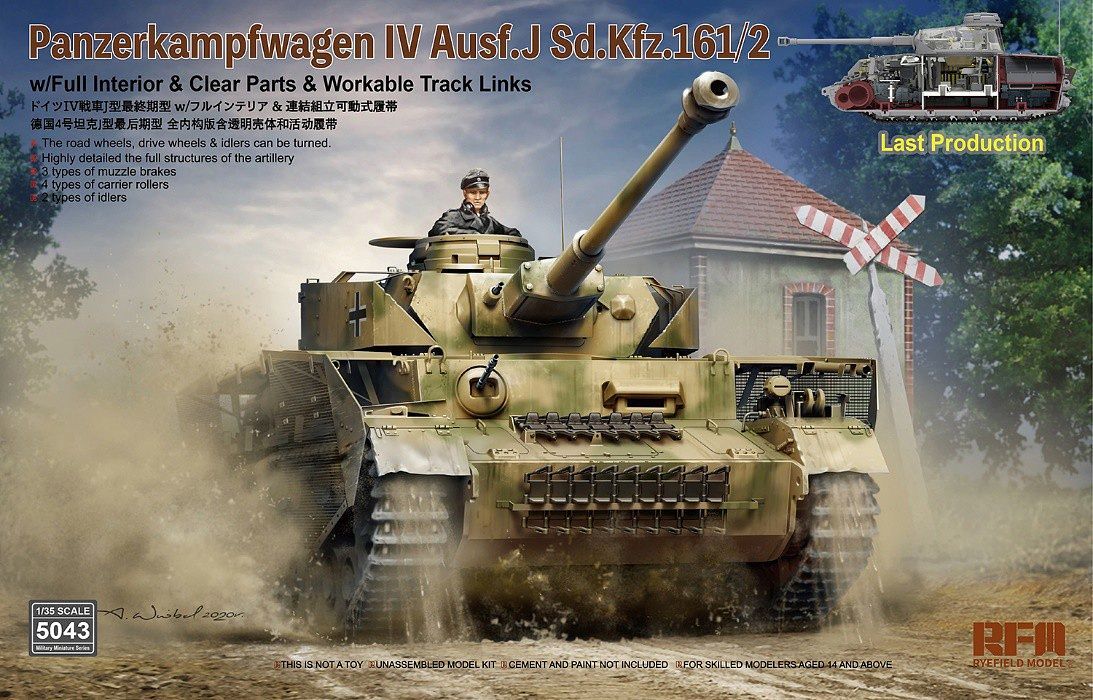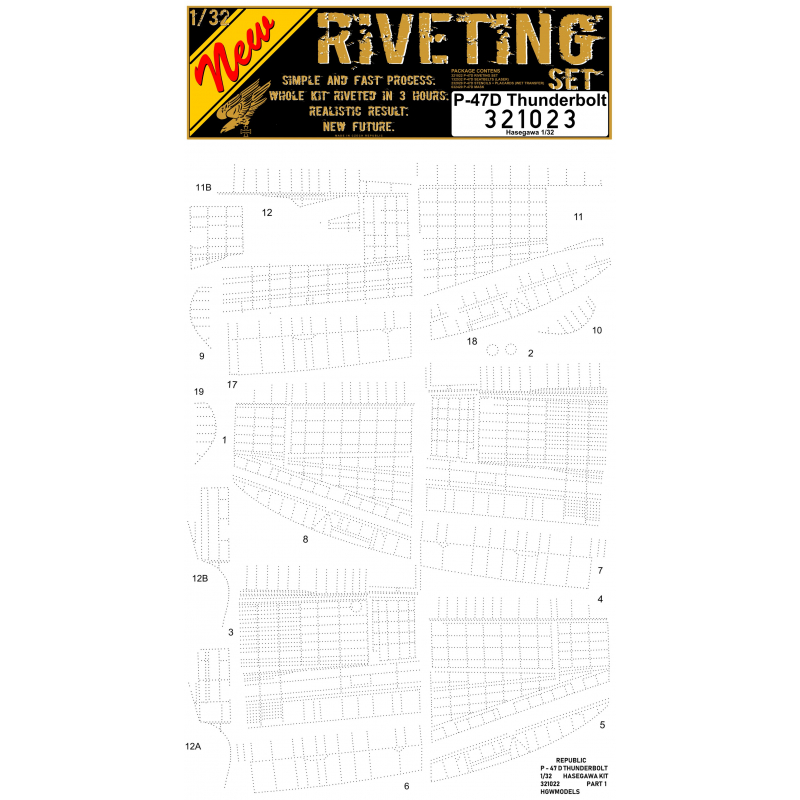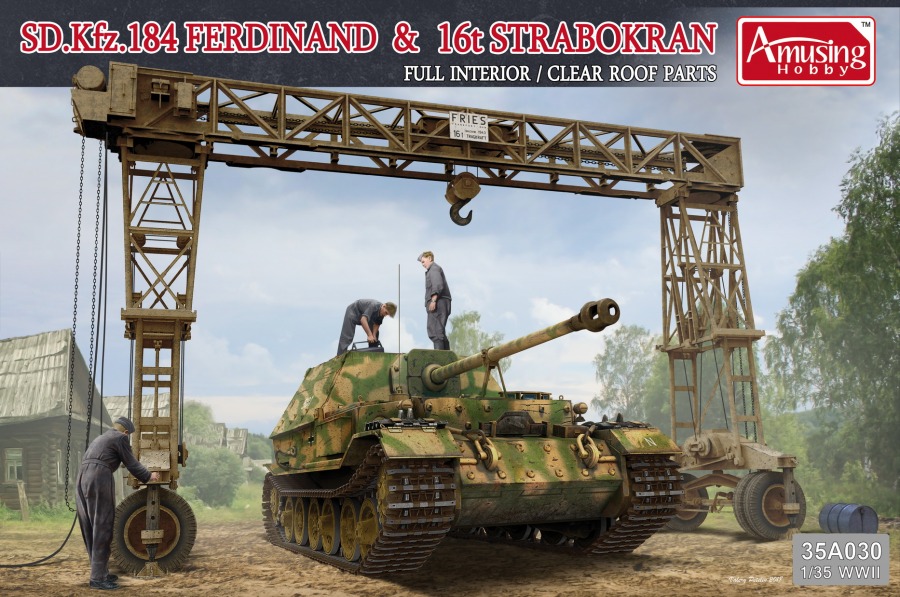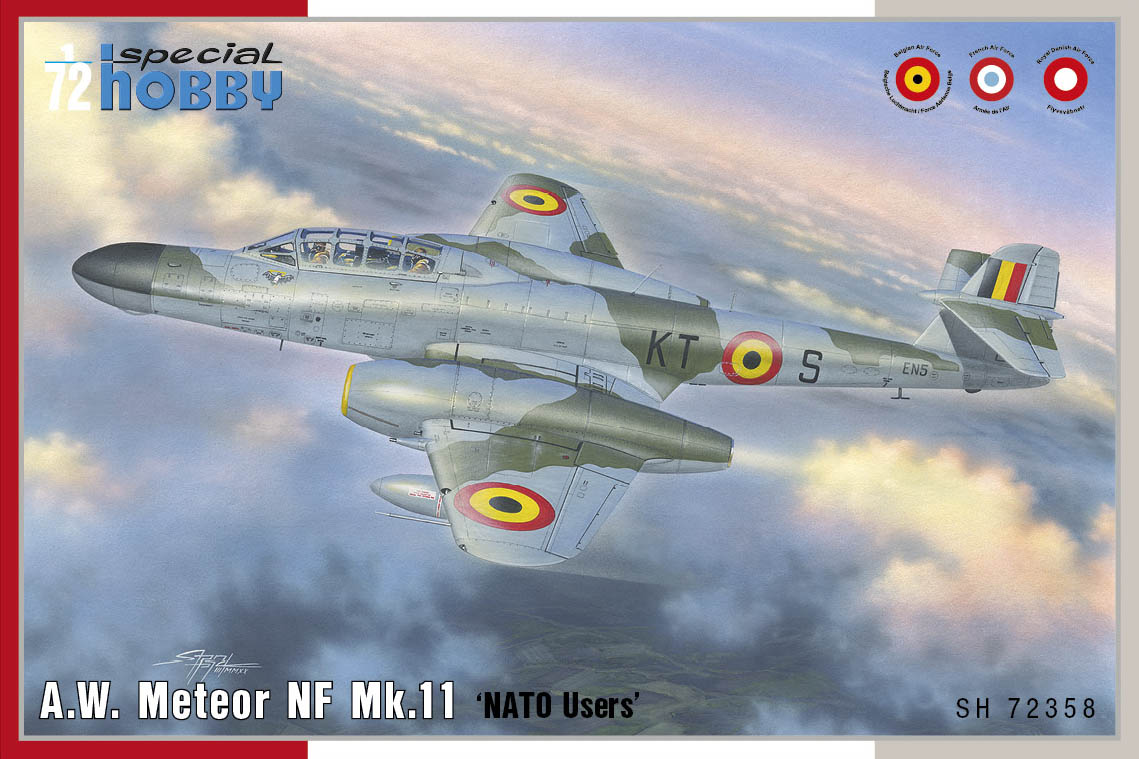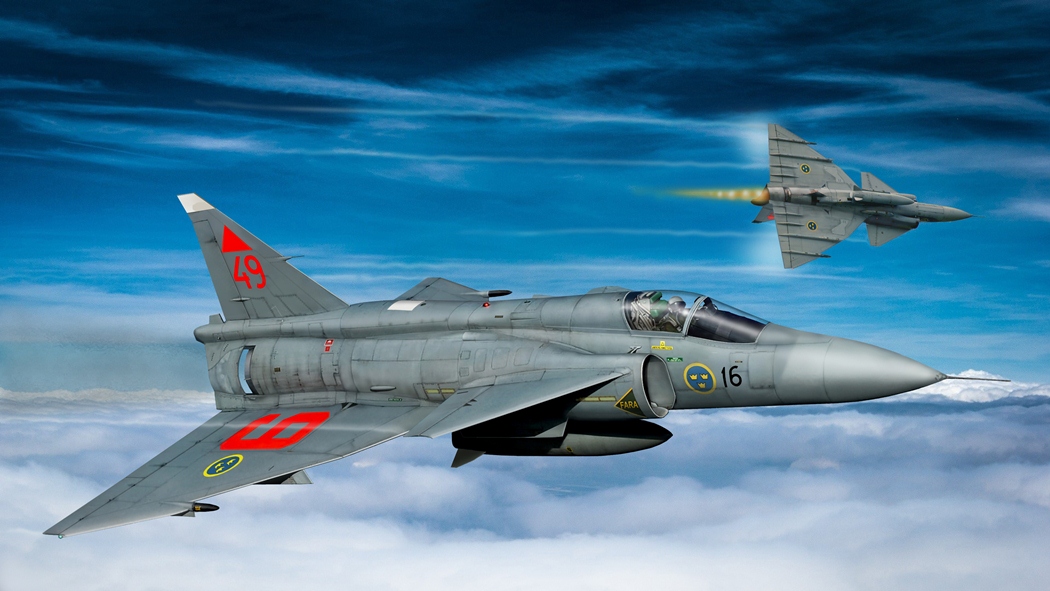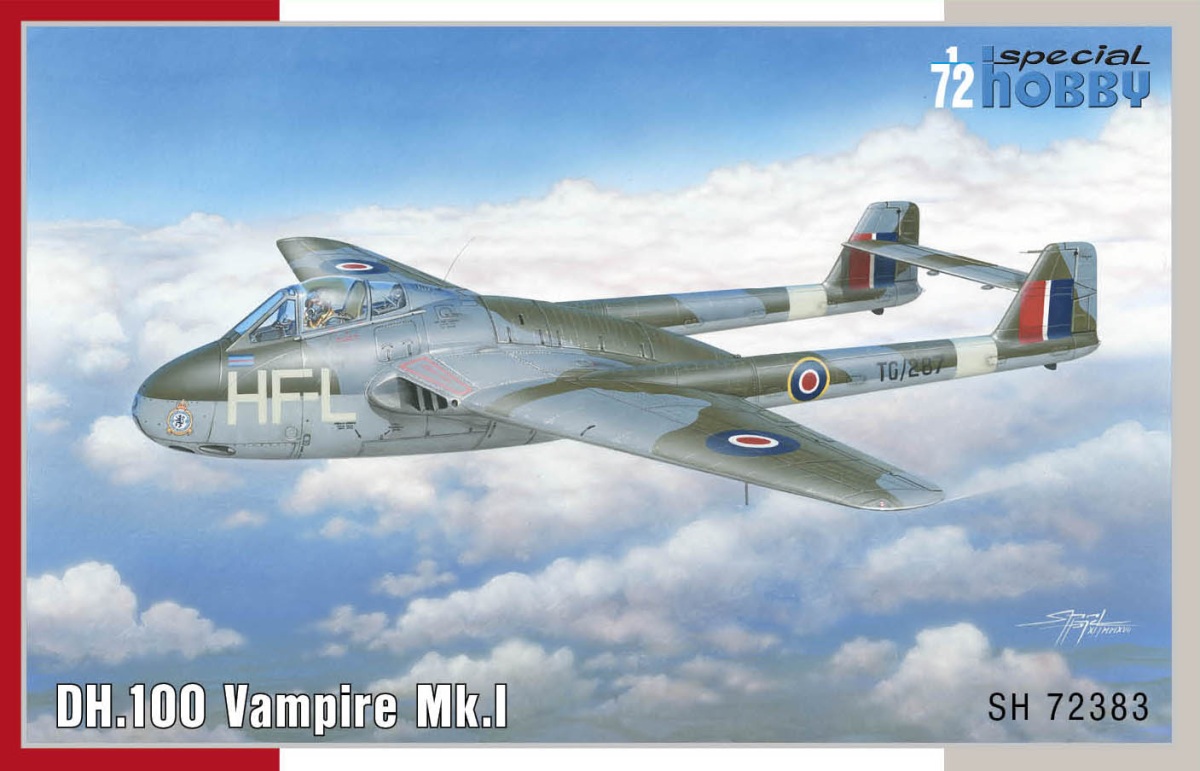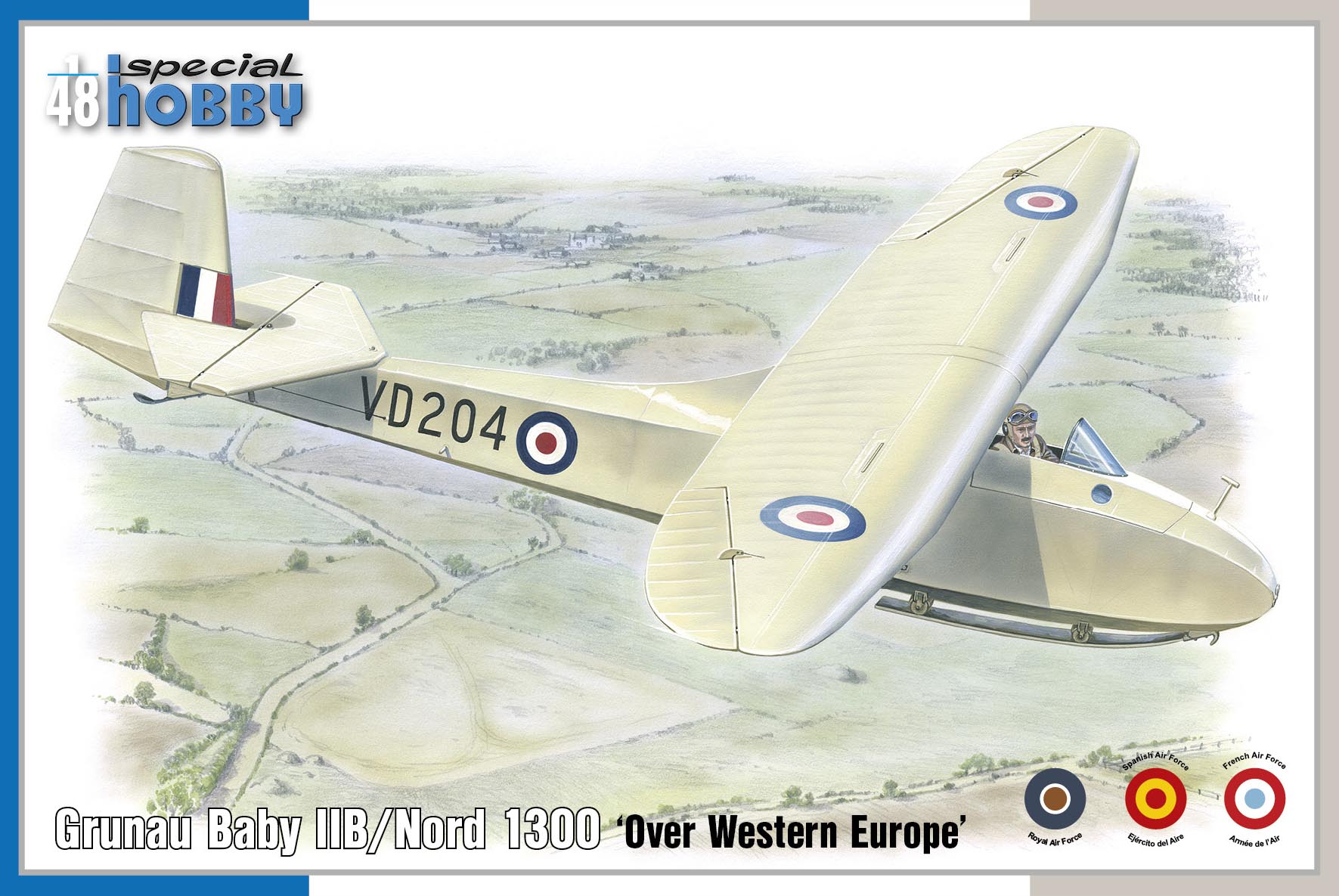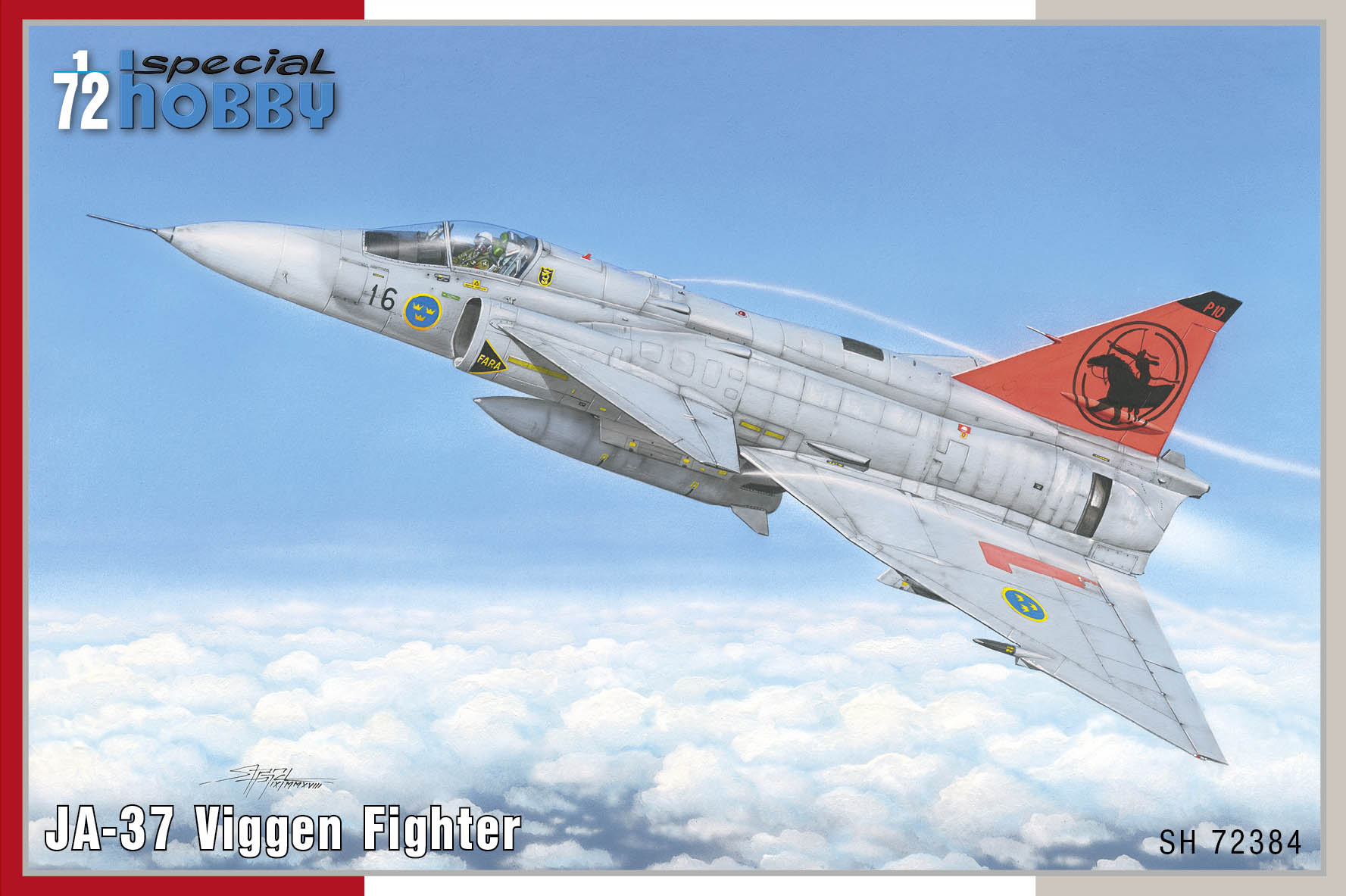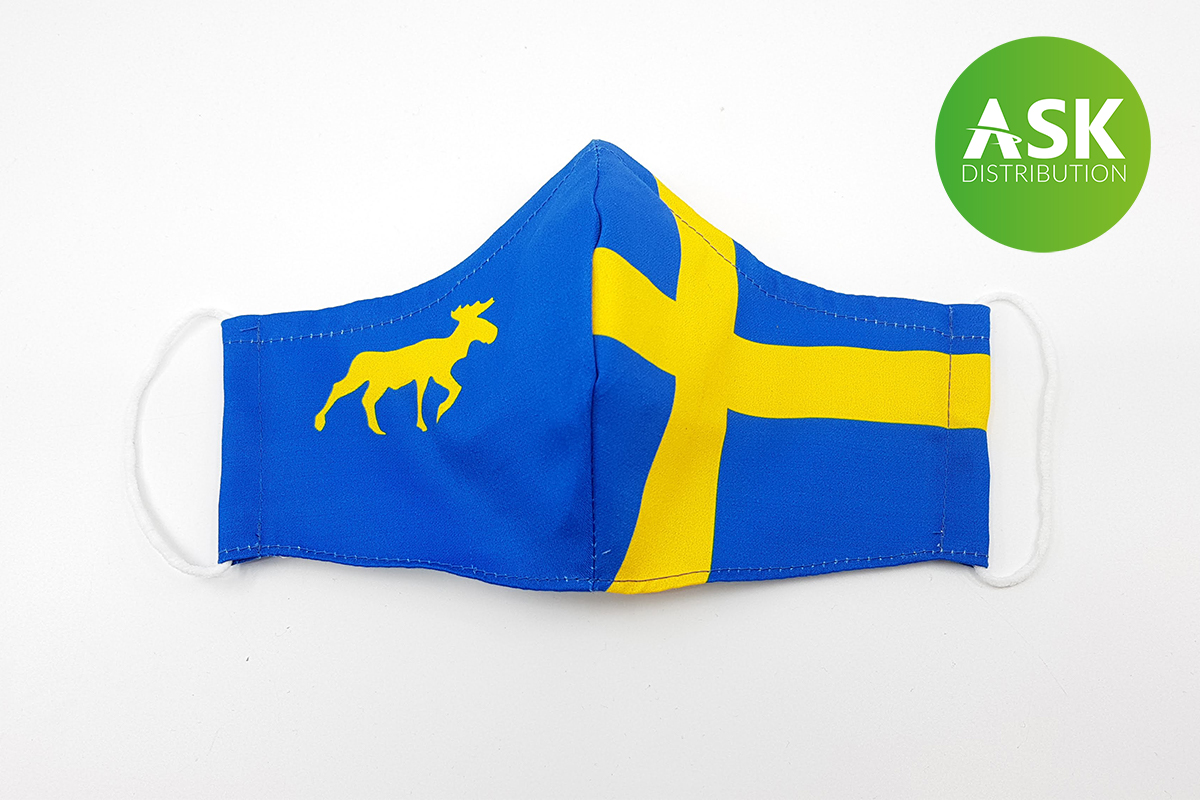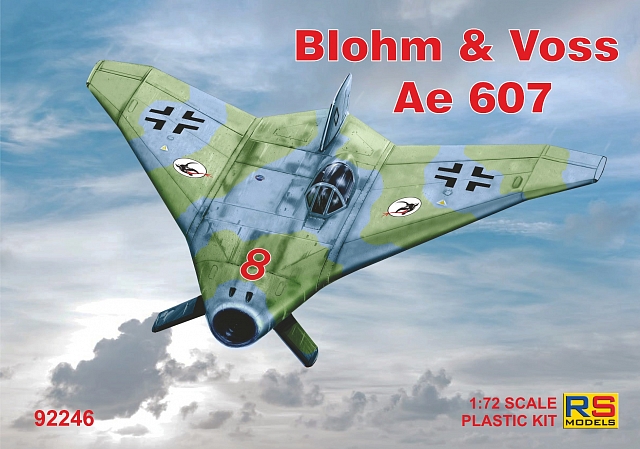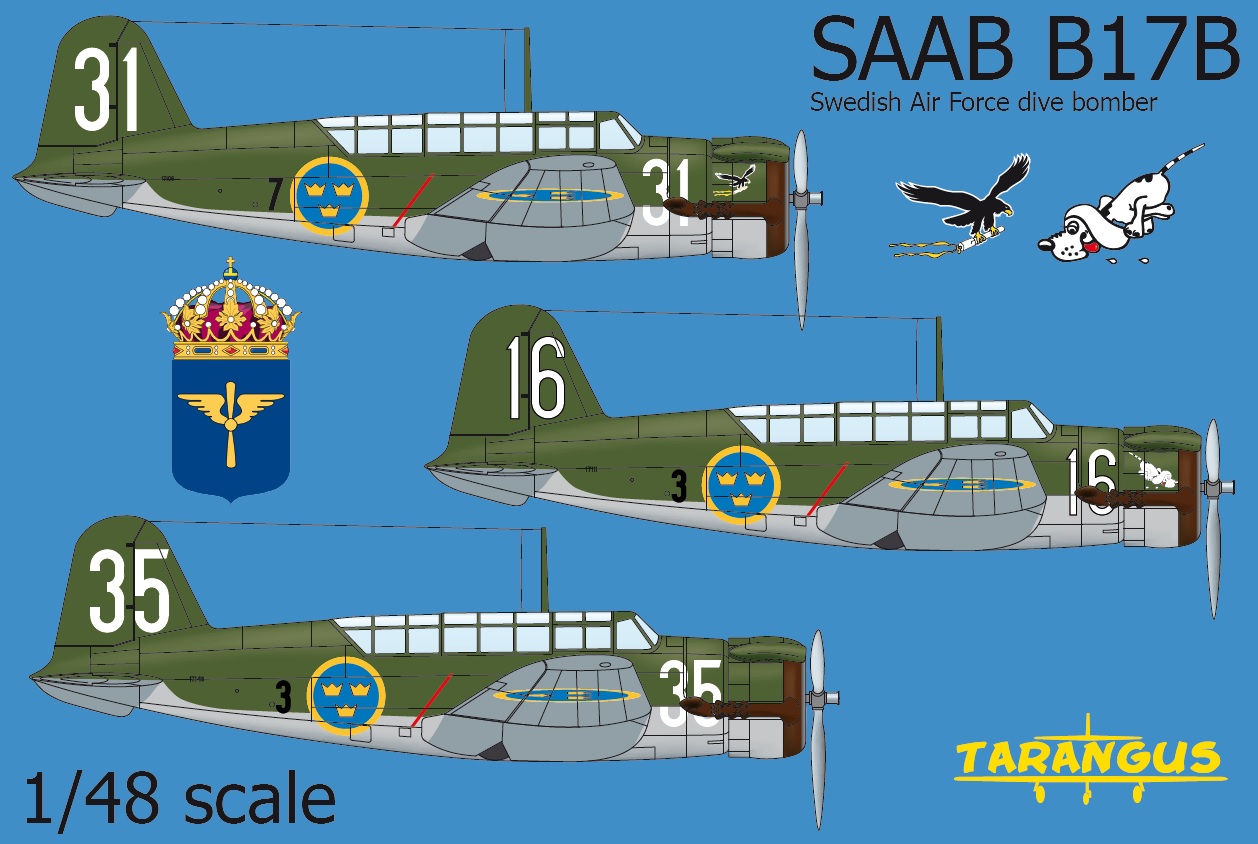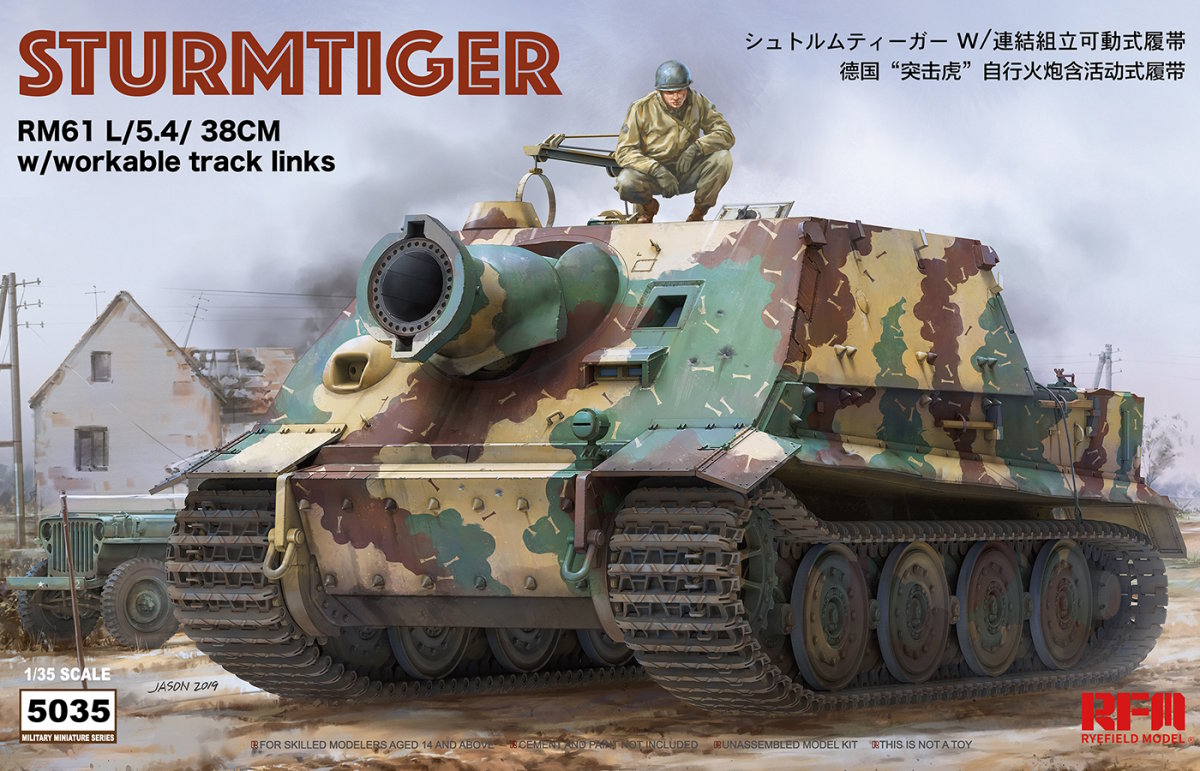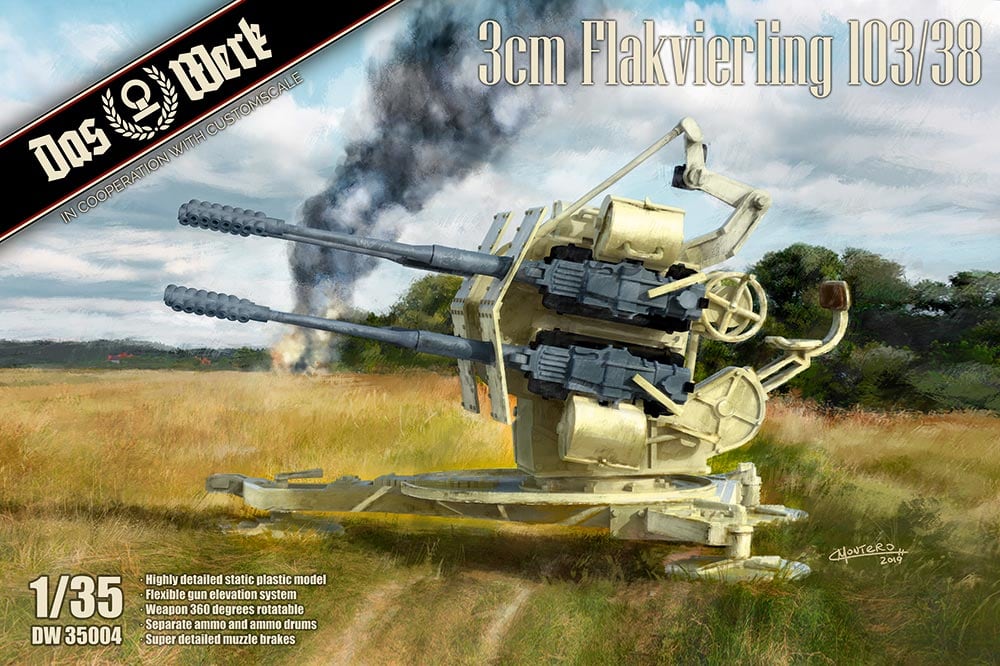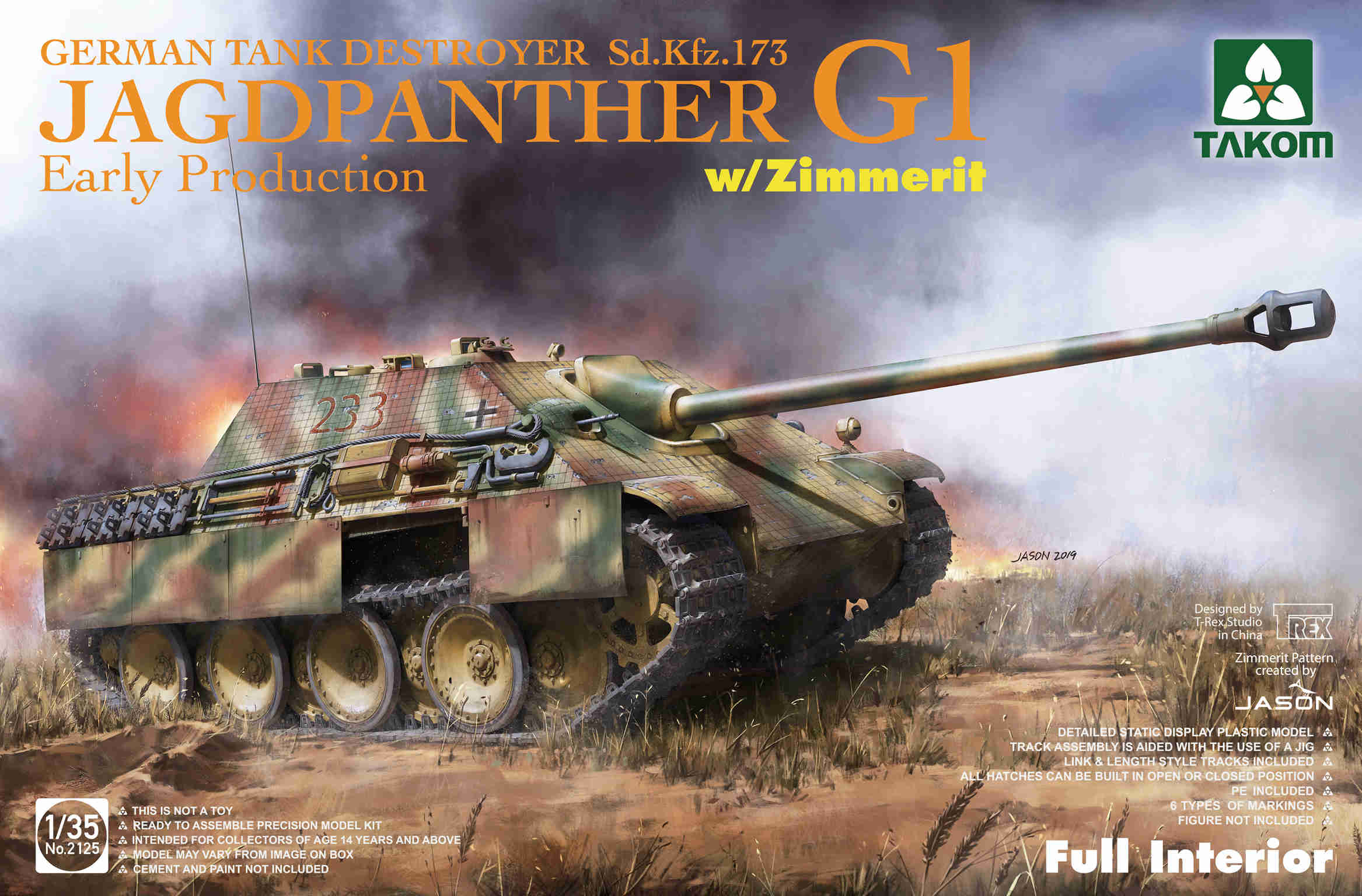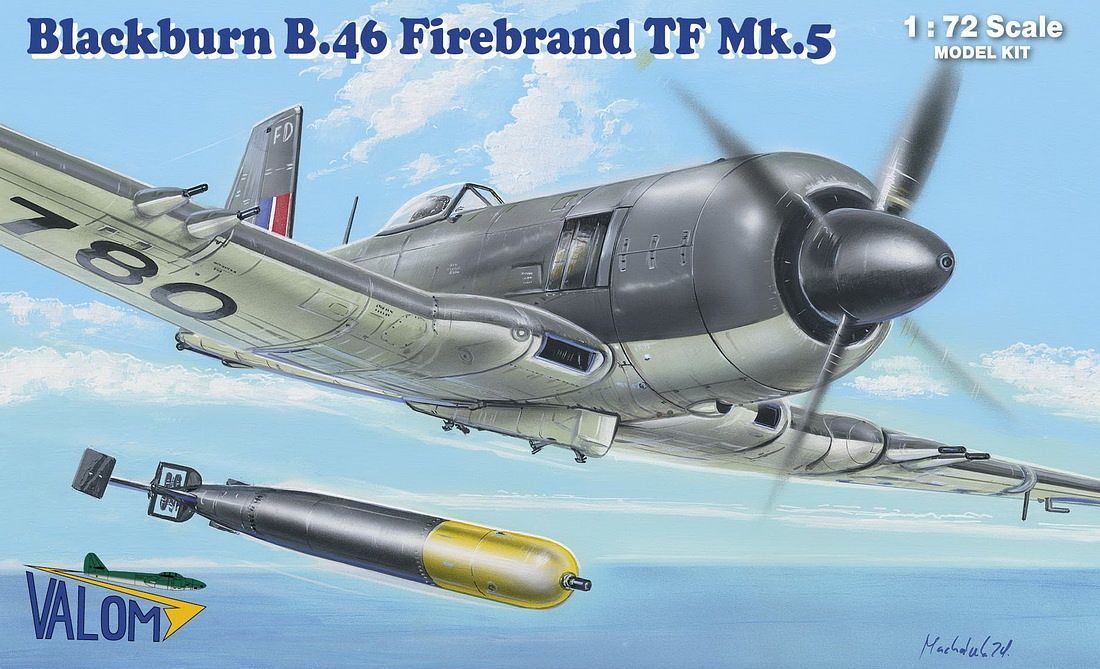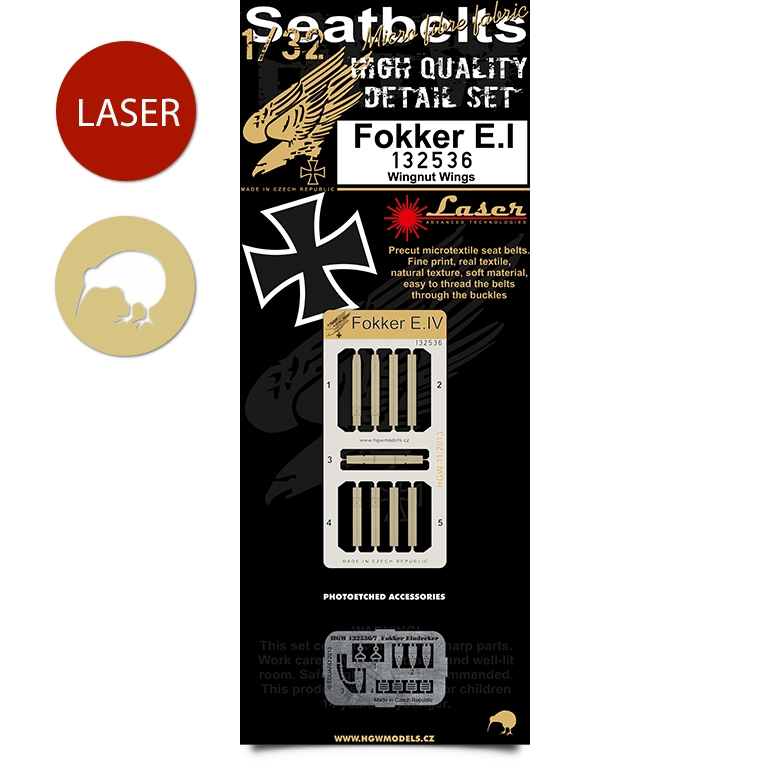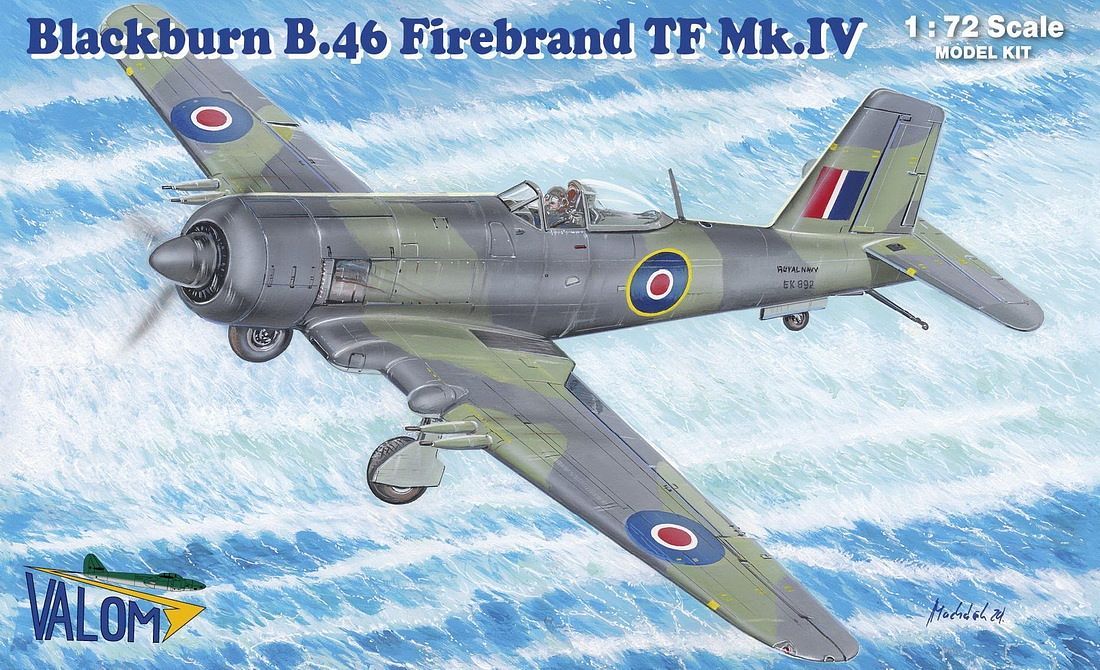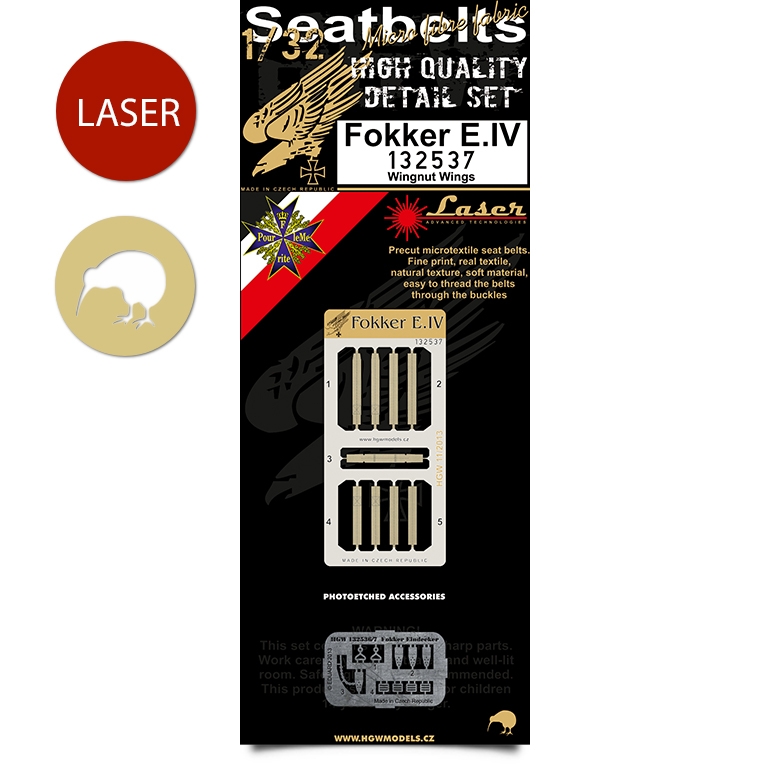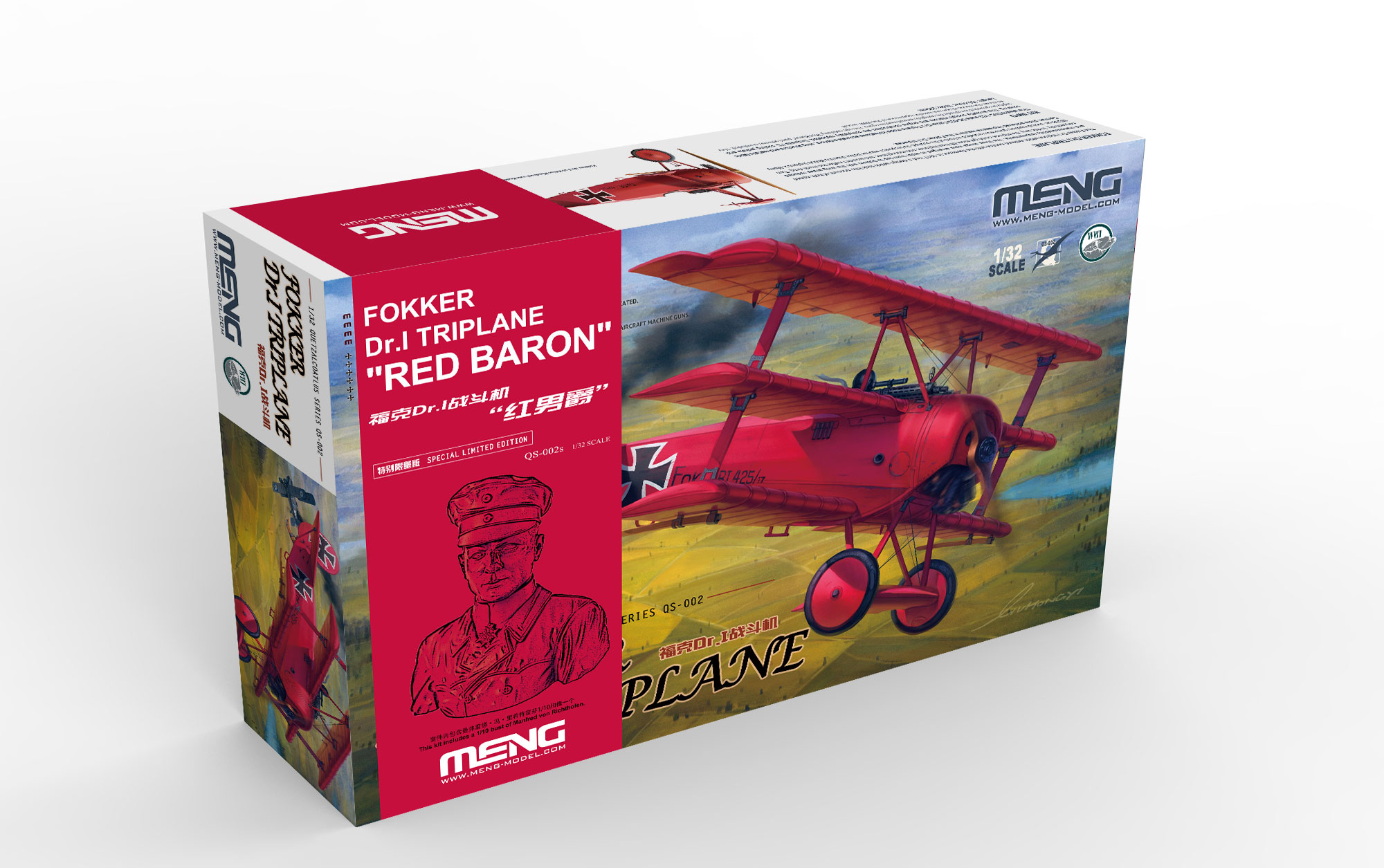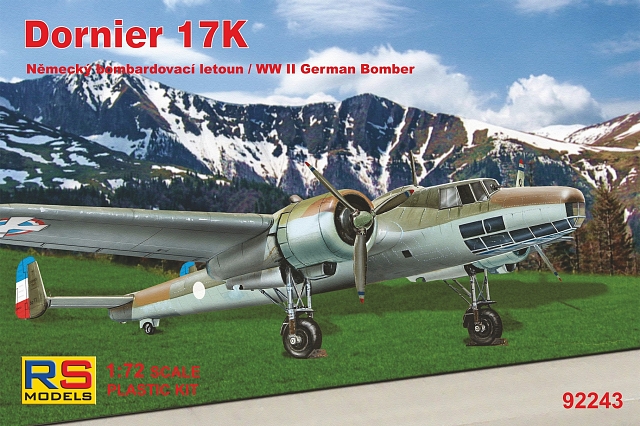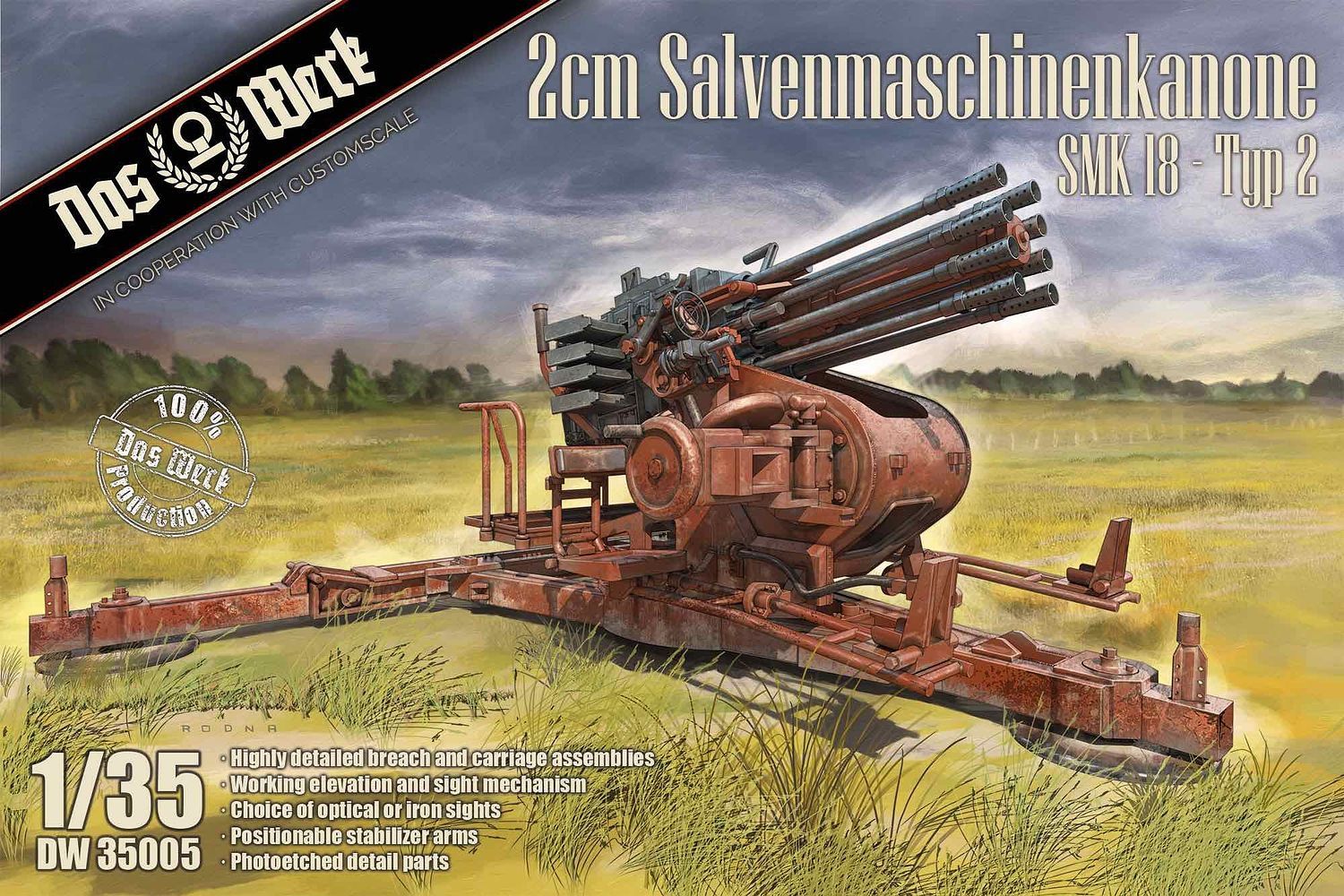Modely
Celkem 152 produktů
1/72 BHU-6B / UF-2 "Albatross" (Japan Maritime Self-Defense Force). The Beriev Be-8 (USAF/DoD reporting name “Type 33”, NATO reporting name “Mole”), was built by the Soviet Beriev OKB in 1947. It was a passenger/liaison amphibian aircraft with a layout similar to the Be-4 but substantially larger and heavier. It was a single engine parasol with the wing installed on a thin pylon and a pair of short struts. Compared to the Be-4, the Be-8 was equipped with retractable landing gear, and pilot and passenger cabins had heating utilizing engine heat. The Be-8 was intended as a civil aircraft and carried no armament. First flight was on December 3, demonstrating good performance. Two experimental aircraft were built, and one was demonstrated during 1951 Soviet Aviation Day at Tushino.One of Be-8 was equipped with hydrofoils, developed at TsAGI. These “Underwater Wings” were installed on landing gear struts and pushed aircraft above the water well before it could be done by the wing lift force. As a result, takeoff was much easier and imposed less punishment on the hull from the waves. Despite very effective during takeoff hydrofoils had negative impact on flight speed. Construction of retractable hydrofoils was not ready, and the concept did not find practical applications.
1/72 BHU-6B / UF-2 "Albatross" (Japan Maritime Self-Defense Force). The Beriev Be-8 (USAF/DoD reporting name “Type 33”, NATO reporting name “Mole”), was built by the Soviet Beriev OKB in 1947. It was a passenger/liaison amphibian aircraft with a layout similar to the Be-4 but substantially larger and heavier. It was a single engine parasol with the wing installed on a thin pylon and a pair of short struts. Compared to the Be-4, the Be-8 was equipped with retractable landing gear, and pilot and passenger cabins had heating utilizing engine heat. The Be-8 was intended as a civil aircraft and carried no armament. First flight was on December 3, demonstrating good performance. Two experimental aircraft were built, and one was demonstrated during 1951 Soviet Aviation Day at Tushino.One of Be-8 was equipped with hydrofoils, developed at TsAGI. These “Underwater Wings” were installed on landing gear struts and pushed aircraft above the water well before it could be done by the wing lift force. As a result, takeoff was much easier and imposed less punishment on the hull from the waves. Despite very effective during takeoff hydrofoils had negative impact on flight speed. Construction of retractable hydrofoils was not ready, and the concept did not find practical applications.
1/72 KDA-2 type 88 light bomber. The Beriev Be-8 (USAF/DoD reporting name “Type 33”, NATO reporting name “Mole”), was built by the Soviet Beriev OKB in 1947. It was a passenger/liaison amphibian aircraft with a layout similar to the Be-4 but substantially larger and heavier. It was a single engine parasol with the wing installed on a thin pylon and a pair of short struts. Compared to the Be-4, the Be-8 was equipped with retractable landing gear, and pilot and passenger cabins had heating utilizing engine heat. The Be-8 was intended as a civil aircraft and carried no armament. First flight was on December 3, demonstrating good performance. Two experimental aircraft were built, and one was demonstrated during 1951 Soviet Aviation Day at Tushino.One of Be-8 was equipped with hydrofoils, developed at TsAGI. These “Underwater Wings” were installed on landing gear struts and pushed aircraft above the water well before it could be done by the wing lift force. As a result, takeoff was much easier and imposed less punishment on the hull from the waves. Despite very effective during takeoff hydrofoils had negative impact on flight speed. Construction of retractable hydrofoils was not ready, and the concept did not find practical applications.
1/72 Be-8 passenger amphibian aircraft. The Beriev Be-8 (USAF/DoD reporting name “Type 33”, NATO reporting name “Mole”), was built by the Soviet Beriev OKB in 1947. It was a passenger/liaison amphibian aircraft with a layout similar to the Be-4 but substantially larger and heavier. It was a single engine parasol with the wing installed on a thin pylon and a pair of short struts. Compared to the Be-4, the Be-8 was equipped with retractable landing gear, and pilot and passenger cabins had heating utilizing engine heat. The Be-8 was intended as a civil aircraft and carried no armament. First flight was on December 3, demonstrating good performance. Two experimental aircraft were built, and one was demonstrated during 1951 Soviet Aviation Day at Tushino.One of Be-8 was equipped with hydrofoils, developed at TsAGI. These “Underwater Wings” were installed on landing gear struts and pushed aircraft above the water well before it could be done by the wing lift force. As a result, takeoff was much easier and imposed less punishment on the hull from the waves. Despite very effective during takeoff hydrofoils had negative impact on flight speed. Construction of retractable hydrofoils was not ready, and the concept did not find practical applications.
1/72 Be-8 passenger amphibian aircraft. The Beriev Be-8 (USAF/DoD reporting name “Type 33”, NATO reporting name “Mole”), was built by the Soviet Beriev OKB in 1947. It was a passenger/liaison amphibian aircraft with a layout similar to the Be-4 but substantially larger and heavier. It was a single engine parasol with the wing installed on a thin pylon and a pair of short struts. Compared to the Be-4, the Be-8 was equipped with retractable landing gear, and pilot and passenger cabins had heating utilizing engine heat. The Be-8 was intended as a civil aircraft and carried no armament. First flight was on December 3, demonstrating good performance. Two experimental aircraft were built, and one was demonstrated during 1951 Soviet Aviation Day at Tushino.One of Be-8 was equipped with hydrofoils, developed at TsAGI. These “Underwater Wings” were installed on landing gear struts and pushed aircraft above the water well before it could be done by the wing lift force. As a result, takeoff was much easier and imposed less punishment on the hull from the waves. Despite very effective during takeoff hydrofoils had negative impact on flight speed. Construction of retractable hydrofoils was not ready, and the concept did not find practical applications.
1/72 Be-8 amphibian aircraft (with water skis & hydrofoils). The Beriev Be-8 (USAF/DoD reporting name “Type 33”, NATO reporting name “Mole”), was built by the Soviet Beriev OKB in 1947. It was a passenger/liaison amphibian aircraft with a layout similar to the Be-4 but substantially larger and heavier. It was a single engine parasol with the wing installed on a thin pylon and a pair of short struts. Compared to the Be-4, the Be-8 was equipped with retractable landing gear, and pilot and passenger cabins had heating utilizing engine heat. The Be-8 was intended as a civil aircraft and carried no armament. First flight was on December 3, demonstrating good performance. Two experimental aircraft were built, and one was demonstrated during 1951 Soviet Aviation Day at Tushino.One of Be-8 was equipped with hydrofoils, developed at TsAGI. These “Underwater Wings” were installed on landing gear struts and pushed aircraft above the water well before it could be done by the wing lift force. As a result, takeoff was much easier and imposed less punishment on the hull from the waves. Despite very effective during takeoff hydrofoils had negative impact on flight speed. Construction of retractable hydrofoils was not ready, and the concept did not find practical applications.
1/72 KDA-2 type 88-1 scout. The Beriev Be-8 (USAF/DoD reporting name “Type 33”, NATO reporting name “Mole”), was built by the Soviet Beriev OKB in 1947. It was a passenger/liaison amphibian aircraft with a layout similar to the Be-4 but substantially larger and heavier. It was a single engine parasol with the wing installed on a thin pylon and a pair of short struts. Compared to the Be-4, the Be-8 was equipped with retractable landing gear, and pilot and passenger cabins had heating utilizing engine heat. The Be-8 was intended as a civil aircraft and carried no armament. First flight was on December 3, demonstrating good performance. Two experimental aircraft were built, and one was demonstrated during 1951 Soviet Aviation Day at Tushino.One of Be-8 was equipped with hydrofoils, developed at TsAGI. These “Underwater Wings” were installed on landing gear struts and pushed aircraft above the water well before it could be done by the wing lift force. As a result, takeoff was much easier and imposed less punishment on the hull from the waves. Despite very effective during takeoff hydrofoils had negative impact on flight speed. Construction of retractable hydrofoils was not ready, and the concept did not find practical applications.
1/72 KDA-2 type 88 light bomber. The Beriev Be-8 (USAF/DoD reporting name “Type 33”, NATO reporting name “Mole”), was built by the Soviet Beriev OKB in 1947. It was a passenger/liaison amphibian aircraft with a layout similar to the Be-4 but substantially larger and heavier. It was a single engine parasol with the wing installed on a thin pylon and a pair of short struts. Compared to the Be-4, the Be-8 was equipped with retractable landing gear, and pilot and passenger cabins had heating utilizing engine heat. The Be-8 was intended as a civil aircraft and carried no armament. First flight was on December 3, demonstrating good performance. Two experimental aircraft were built, and one was demonstrated during 1951 Soviet Aviation Day at Tushino.One of Be-8 was equipped with hydrofoils, developed at TsAGI. These “Underwater Wings” were installed on landing gear struts and pushed aircraft above the water well before it could be done by the wing lift force. As a result, takeoff was much easier and imposed less punishment on the hull from the waves. Despite very effective during takeoff hydrofoils had negative impact on flight speed. Construction of retractable hydrofoils was not ready, and the concept did not find practical applications.
1/72 KDA-2 type 88-1 scout. The Beriev Be-8 (USAF/DoD reporting name “Type 33”, NATO reporting name “Mole”), was built by the Soviet Beriev OKB in 1947. It was a passenger/liaison amphibian aircraft with a layout similar to the Be-4 but substantially larger and heavier. It was a single engine parasol with the wing installed on a thin pylon and a pair of short struts. Compared to the Be-4, the Be-8 was equipped with retractable landing gear, and pilot and passenger cabins had heating utilizing engine heat. The Be-8 was intended as a civil aircraft and carried no armament. First flight was on December 3, demonstrating good performance. Two experimental aircraft were built, and one was demonstrated during 1951 Soviet Aviation Day at Tushino.One of Be-8 was equipped with hydrofoils, developed at TsAGI. These “Underwater Wings” were installed on landing gear struts and pushed aircraft above the water well before it could be done by the wing lift force. As a result, takeoff was much easier and imposed less punishment on the hull from the waves. Despite very effective during takeoff hydrofoils had negative impact on flight speed. Construction of retractable hydrofoils was not ready, and the concept did not find practical applications.
1/72 KDA-2 type 88-2 scout. The Beriev Be-8 (USAF/DoD reporting name “Type 33”, NATO reporting name “Mole”), was built by the Soviet Beriev OKB in 1947. It was a passenger/liaison amphibian aircraft with a layout similar to the Be-4 but substantially larger and heavier. It was a single engine parasol with the wing installed on a thin pylon and a pair of short struts. Compared to the Be-4, the Be-8 was equipped with retractable landing gear, and pilot and passenger cabins had heating utilizing engine heat. The Be-8 was intended as a civil aircraft and carried no armament. First flight was on December 3, demonstrating good performance. Two experimental aircraft were built, and one was demonstrated during 1951 Soviet Aviation Day at Tushino.One of Be-8 was equipped with hydrofoils, developed at TsAGI. These “Underwater Wings” were installed on landing gear struts and pushed aircraft above the water well before it could be done by the wing lift force. As a result, takeoff was much easier and imposed less punishment on the hull from the waves. Despite very effective during takeoff hydrofoils had negative impact on flight speed. Construction of retractable hydrofoils was not ready, and the concept did not find practical applications.
1/72 Be-8 amphibian aircraft (with water skis & hydrofoils). The Beriev Be-8 (USAF/DoD reporting name “Type 33”, NATO reporting name “Mole”), was built by the Soviet Beriev OKB in 1947. It was a passenger/liaison amphibian aircraft with a layout similar to the Be-4 but substantially larger and heavier. It was a single engine parasol with the wing installed on a thin pylon and a pair of short struts. Compared to the Be-4, the Be-8 was equipped with retractable landing gear, and pilot and passenger cabins had heating utilizing engine heat. The Be-8 was intended as a civil aircraft and carried no armament. First flight was on December 3, demonstrating good performance. Two experimental aircraft were built, and one was demonstrated during 1951 Soviet Aviation Day at Tushino.One of Be-8 was equipped with hydrofoils, developed at TsAGI. These “Underwater Wings” were installed on landing gear struts and pushed aircraft above the water well before it could be done by the wing lift force. As a result, takeoff was much easier and imposed less punishment on the hull from the waves. Despite very effective during takeoff hydrofoils had negative impact on flight speed. Construction of retractable hydrofoils was not ready, and the concept did not find practical applications.
Tamiya Paint Retarder (Lacquer). This retarder is perfect for use when brush-painting lacquer paints. It slows the drying process, helping eliminate surface imperfections from brush bristles, giving a smooth and lustrous finish. Can be used up to a ratio of 1:10 (retarder:paint) when mixing. Contents: 40ml.
Plastikový model letadla 1/48 Reggiane Re 2000 I. Serie. Just before the outbreak of WW2, the Reggiane Re 2000 took part in the competition for the standard fighter which was to serve with the Italian air force. Even though the type offered quite high performance, it eventually did not win, so the most of the production was offered for export. The Regia Aeronautica, however, decided to give the type a try and deployed it mainly in the dangerous operations against Malta. The model kit contains four styrene sprues and one with clear parts. The wing sprue has its origins in the Classic Airframes kit while all the other components are brand new, the small ones being produced from metal moulds. Italian WW2 fighter aeroplane three eye-catching marking options bearing the Italian mottle camouflage pattern we also offer separate resin sets and pre-cut masks
Plastikový model letadla 1/48 Reggiane Re 2000 I. Serie. Just before the outbreak of WW2, the Reggiane Re 2000 took part in the competition for the standard fighter which was to serve with the Italian air force. Even though the type offered quite high performance, it eventually did not win, so the most of the production was offered for export. The Regia Aeronautica, however, decided to give the type a try and deployed it mainly in the dangerous operations against Malta. The model kit contains four styrene sprues and one with clear parts. The wing sprue has its origins in the Classic Airframes kit while all the other components are brand new, the small ones being produced from metal moulds. Italian WW2 fighter aeroplane three eye-catching marking options bearing the Italian mottle camouflage pattern we also offer separate resin sets and pre-cut masks
1/32 Halberstadt CI.II - Fabric Seat Belts - pre-cut (laser). Accessory designed for vintage model aircraft by Wingnut Wings. Seat belts from HGW Models are laser-cut so it is easy-to-use product. Set contains micro fabric belts and photo etched buckles suitable for large scale planes in 1/32 scale.
1/32 Halberstadt CI.II - Fabric Seat Belts - pre-cut (laser). Accessory designed for vintage model aircraft by Wingnut Wings. Seat belts from HGW Models are laser-cut so it is easy-to-use product. Set contains micro fabric belts and photo etched buckles suitable for large scale planes in 1/32 scale.
Tamiya Metal Primer Spray for Undercoating Metal Parts - 100 ml. Aluminum, photo-etched, die cast and pressed metal parts increase the realism and strength of plastic models. This clear spray primer for treating metallic parts does not damage plastic, and applied as an undercoat, it will prevent paint from peeling off of metal parts.contents: 100ml.
1/35 Panzer IV Ausf.J last production - full interior. The No, IV Type J tank was the final version of the No. IV tank series, and was simplified from previous versions to improve productivity. The biggest change from the H-type is the removal of the turret rotation motor and auxiliary engine for power generation; this allowed the turret to be turned manually. By removing these items and adding a fuel tank, the tank's cruising range was increased from 210km to 320km on level ground. This kit from Rye Field Model has a newly molded full interior! It also has clear parts for the turret and upper hull, in addition to the normal parts. The tracks are of the linkable assembly type, and the suspension is movable; it comes with three types of muzzle brakes, two types of guide wheels and four types of upper wheels. Photo-etched parts and decals for three versions are also included. [Includes]: Photo-etched parts, decals for 3 versions
1/35 Panzer IV Ausf.J last production - full interior. The No, IV Type J tank was the final version of the No. IV tank series, and was simplified from previous versions to improve productivity. The biggest change from the H-type is the removal of the turret rotation motor and auxiliary engine for power generation; this allowed the turret to be turned manually. By removing these items and adding a fuel tank, the tank's cruising range was increased from 210km to 320km on level ground. This kit from Rye Field Model has a newly molded full interior! It also has clear parts for the turret and upper hull, in addition to the normal parts. The tracks are of the linkable assembly type, and the suspension is movable; it comes with three types of muzzle brakes, two types of guide wheels and four types of upper wheels. Photo-etched parts and decals for three versions are also included. [Includes]: Photo-etched parts, decals for 3 versions
Tamiya Basic File Set (Smooth Double-Cut) - Sada oboustraných pilníků. This set of 3 files includes flat, hemispherical and round files for use in the construction of plastic models, Mini 4WD models, and even for metal-working. The files are double-cut and their smooth cut provides an equally-smooth finish on the material being worked. A special coating is applied to the grip to make it extremely comfortable to hold.
1/32 P-47D Thunderbolt - Super Riveting Set - Riveting Sets - Hasegawa. Package contents:1x P-47D - Riveting Set 1/32 - 3210221x P-47D Thunderbolt - Stencils + Placard - 1/32 - 2320291x P-47D Thunderbolt - Seatbelts 1/32 - 1325321x P-47D Thunderbolt - Masks 1/32 - 632420 Instructions:Convenient undercoat is Mr. Surfacer 1000 or Mr. Base White 1000.*Wipe the surface with a damp cloth, remove dust and grease.Cut the required part from riveting sheet.Remove top translucent paper and dip rivets in the warm water for approx. 15 seconds.When rivets are separated from its carrier paper apply them on the surface. We recommend to use a spot of Mr. Mark Softer.Find appropriate position and then push the liquid from below the transfer. The purpose is to get each rivet in touch with the surface.Let it dry for min. 2 hours, but optimal time could be e.g. over the night.Finally pull of the top transparent foil / film with sharp tweezers and clean the marks caused by transfer glue.* While application on coloured surfaces it is needed to make a test of adhesion and of time which is necessary for appropriate attaching of rivets. Generally the smoother surface the more time needed.
1/32 P-47D Thunderbolt - Super Riveting Set - Riveting Sets - Hasegawa. Package contents:1x P-47D - Riveting Set 1/32 - 3210221x P-47D Thunderbolt - Stencils + Placard - 1/32 - 2320291x P-47D Thunderbolt - Seatbelts 1/32 - 1325321x P-47D Thunderbolt - Masks 1/32 - 632420 Instructions:Convenient undercoat is Mr. Surfacer 1000 or Mr. Base White 1000.*Wipe the surface with a damp cloth, remove dust and grease.Cut the required part from riveting sheet.Remove top translucent paper and dip rivets in the warm water for approx. 15 seconds.When rivets are separated from its carrier paper apply them on the surface. We recommend to use a spot of Mr. Mark Softer.Find appropriate position and then push the liquid from below the transfer. The purpose is to get each rivet in touch with the surface.Let it dry for min. 2 hours, but optimal time could be e.g. over the night.Finally pull of the top transparent foil / film with sharp tweezers and clean the marks caused by transfer glue.* While application on coloured surfaces it is needed to make a test of adhesion and of time which is necessary for appropriate attaching of rivets. Generally the smoother surface the more time needed.
1/35 Sd.Kfz.184 Ferdinand & 16t Strabokran. DESCRIPTION This is an injection-plastic military vehicle model kit. From Amusing Hobby comes a 2-in-1 kit of the Ferdinand Jagdpanzer Sd.Kfz. 184 and 16t Strabokran! The characteristic feature of the Ferdinand was that it was generated by two gasoline engines and driven by an electric motor. By using a motor as the driving unit, no transmission was required. In the past, this vehicle was said to have a lot of breakdowns for this reason, but some recent documents have reported that there were fewer breakdowns than some vehicles equipped with transmissions. On the Eastern Front, the Ferdinand's appearance had a great impact. Strabokrans are gate-type mobile cranes used by German field maintenance teams during tank maintenance and repairs. About 100 units were manufactured and used in German armored divisions and heavy tank battalions. Kit features: The Ferdinand's interior layout can be enjoyed even after completion thanks to the included transparent parts. The kit recreates the precise details of the Strabokran, and it can assembled in its working state. [Mold Color]: Tan, brown [Includes]: Clear parts, photo-etched parts Release Date:Sep 2019 Item Size/Weight:39.8cm x 26.3cm x 19.5cm / 1680g
1/35 Sd.Kfz.184 Ferdinand & 16t Strabokran. DESCRIPTION This is an injection-plastic military vehicle model kit. From Amusing Hobby comes a 2-in-1 kit of the Ferdinand Jagdpanzer Sd.Kfz. 184 and 16t Strabokran! The characteristic feature of the Ferdinand was that it was generated by two gasoline engines and driven by an electric motor. By using a motor as the driving unit, no transmission was required. In the past, this vehicle was said to have a lot of breakdowns for this reason, but some recent documents have reported that there were fewer breakdowns than some vehicles equipped with transmissions. On the Eastern Front, the Ferdinand's appearance had a great impact. Strabokrans are gate-type mobile cranes used by German field maintenance teams during tank maintenance and repairs. About 100 units were manufactured and used in German armored divisions and heavy tank battalions. Kit features: The Ferdinand's interior layout can be enjoyed even after completion thanks to the included transparent parts. The kit recreates the precise details of the Strabokran, and it can assembled in its working state. [Mold Color]: Tan, brown [Includes]: Clear parts, photo-etched parts Release Date:Sep 2019 Item Size/Weight:39.8cm x 26.3cm x 19.5cm / 1680g
Plastikový model letadla 1/72 A.W. Meteor NF Mk.11 ‘Nato Users’. This British all weather twin jet fighter aeroplane not only served quite a long time with the RAF, it was also exported with considerable success to a number of NATO countries as well as to the Middle East. four grey styrene sprues, one clear plastic sprue. decal sheet covering three options come with a full set of airframe stencils marking options for a Belgian, French and a Danish machines
Plastikový model letadla 1/72 A.W. Meteor NF Mk.11 ‘Nato Users’. This British all weather twin jet fighter aeroplane not only served quite a long time with the RAF, it was also exported with considerable success to a number of NATO countries as well as to the Middle East. four grey styrene sprues, one clear plastic sprue. decal sheet covering three options come with a full set of airframe stencils marking options for a Belgian, French and a Danish machines
1/48 SAAB JA37 Viggen fighter. The JA37 Viggen was a Swedish medium-heavy fighter with a secondary role as attack aircraft. It was manufactured by Saab AB. The fighter version of the Viggen was the most common and recently developed of the Viggen variants. The first JA 37 Viggen was flown in 1974 and was rebuilt AJ37 Viggen with RM8A engines. The kit is CAD-produced and injection moulded. Markings for both the gray/gray livery and the intricate splinter camo are included.
1/48 SAAB JA37 Viggen fighter. The JA37 Viggen was a Swedish medium-heavy fighter with a secondary role as attack aircraft. It was manufactured by Saab AB. The fighter version of the Viggen was the most common and recently developed of the Viggen variants. The first JA 37 Viggen was flown in 1974 and was rebuilt AJ37 Viggen with RM8A engines. The kit is CAD-produced and injection moulded. Markings for both the gray/gray livery and the intricate splinter camo are included.
Plastikový model letadla 1/72 DH.100 Vampire Mk.I RAF, RAAF and Armée de l. The kit’s plastic parts come on three grey styrene sprues and two clear sprues which are accompanied by a fret of photo-etches. The first clear sprue offers the standard, late type of the clear hood and also the original, early style canopy typical for the first Mk.Is. This part, however, was not manufactured to our standards, which we regret of course, and thus we have decided to rework the design completely and produce a second sprue with much more exact rendition of the early hood. The decal sheet contains markings for three RAF machines which differ by having various national markings on them, another machine with serial A78-1which was flown by the RAAF down under and the final option brings a very special French machine, in fact a remotely controlled drone named Porthos Originally, the Vampire Mk.I kit was to offer schemes for just two operators of the type, the RAF and RAAF. It has been decided, however, that a new marking option will be offered in this boxing to make it more attractive for a wider range of modellers. The new addition to the kit is a quite eye-catching machine wearing French colours and the title of this boxing has also been updated.
Plastikový model letadla 1/72 DH.100 Vampire Mk.I RAF, RAAF and Armée de l. The kit’s plastic parts come on three grey styrene sprues and two clear sprues which are accompanied by a fret of photo-etches. The first clear sprue offers the standard, late type of the clear hood and also the original, early style canopy typical for the first Mk.Is. This part, however, was not manufactured to our standards, which we regret of course, and thus we have decided to rework the design completely and produce a second sprue with much more exact rendition of the early hood. The decal sheet contains markings for three RAF machines which differ by having various national markings on them, another machine with serial A78-1which was flown by the RAAF down under and the final option brings a very special French machine, in fact a remotely controlled drone named Porthos Originally, the Vampire Mk.I kit was to offer schemes for just two operators of the type, the RAF and RAAF. It has been decided, however, that a new marking option will be offered in this boxing to make it more attractive for a wider range of modellers. The new addition to the kit is a quite eye-catching machine wearing French colours and the title of this boxing has also been updated.
Plastikový model letadla 1/48 Grunau Baby IIB/Nord 1300 'Over Western Europe'. Before and during WW2, the Grunau Baby IIB became the most widely used glider around the world. It is estimated that some 6000 of them were built. Our model has been 3D designed and is injected using metal moulds. One of the three offered marking options was flown by two-time world champion in glider aerobatics Almagro Castellanos. 3D designed, metal tooling decals for British, French and Spanish options highly accurate and nicely detailed model
Plastikový model letadla 1/48 Grunau Baby IIB/Nord 1300 'Over Western Europe'. Before and during WW2, the Grunau Baby IIB became the most widely used glider around the world. It is estimated that some 6000 of them were built. Our model has been 3D designed and is injected using metal moulds. One of the three offered marking options was flown by two-time world champion in glider aerobatics Almagro Castellanos. 3D designed, metal tooling decals for British, French and Spanish options highly accurate and nicely detailed model
Plastikový model letadla 1/72 JA-37 Viggen. Model of the second generation of the Viggen fighter aircraft which featured longer fuselage and more powerful engine. Content of the kit: eight parts on styrene sprues, one clear styrene sprue, full colour instruction booklet, a sheet of decals highly accurate and finely detailed model, the top notch 1/72 Viggen currently on the market decals cater for three machines one of which sports eyecatching anniversary scheme with red tail fin and a rider on it. wide range of detail sets and figures with ladders available. Country of origin: Sweden / modern
Rouška s kapsou Švédsko. Roušky nabízíme pro kolegy, kteří nemají možnost, nebo čas vyrábět si roušky sami. Roušky šije malá oděvní firma z liberecka, která díky šití roušek může nadále zajistit práci svým zaměstnankyním, ženám a manželkám přátel a kolegů. Roušky nabízíme jako podporu malého podnikání a neslouží k vlastnímu obohacení.
Plastikový model letadla 1/72 JA-37 Viggen. Model of the second generation of the Viggen fighter aircraft which featured longer fuselage and more powerful engine. Content of the kit: eight parts on styrene sprues, one clear styrene sprue, full colour instruction booklet, a sheet of decals highly accurate and finely detailed model, the top notch 1/72 Viggen currently on the market decals cater for three machines one of which sports eyecatching anniversary scheme with red tail fin and a rider on it. wide range of detail sets and figures with ladders available. Country of origin: Sweden / modern
Plastikový model letadla 1/72 Blohm and Voss Ae 607 4 decal v. for Luftwaffe, Great Britain. Early in 1945, a Blohm & Voss (B&V) aircraft designer called Thieme began work on Drawing Number Ae 607, within the standard drawing numbering system at B&V. His design for a jet fighter was radically different from anything that B&V had done before. A flying wing, it approximated to a 45° delta planform. Reports of its existence were not confirmed until 2017, when the drawing was published. No Project number is recorded for the design and its intended status is unknown.[
Plastikový model letadla 1/72 Blohm and Voss Ae 607 4 decal v. for Luftwaffe, Great Britain. Early in 1945, a Blohm & Voss (B&V) aircraft designer called Thieme began work on Drawing Number Ae 607, within the standard drawing numbering system at B&V. His design for a jet fighter was radically different from anything that B&V had done before. A flying wing, it approximated to a 45° delta planform. Reports of its existence were not confirmed until 2017, when the drawing was published. No Project number is recorded for the design and its intended status is unknown.[
1/48 SAAB B17B - The first SAAB aircraft. The first SAAB designed and built aircraft was initially an ASJA (SAAB’s predecessor) project called the L-10, a reconnaissance aircraft. When ASJA was merged with SAAB, the airplane was named SAAB 17. It was now also intended as a dive bomber. As the European continent was thrown into war, the lack of engines forced three different versions of the SAAB 17 to be developed; the 17A with Pratt & Whitney Twin Wasp, the 17B with Bristol Mercury XXIV and the 17C with Piaggio P. XIbis R.C.40D. The first prototype flew on May 18 1940 and two years later deliveries commenced.
1/35 Sturmtiger Rm61 L/5.4/38cm W/Workable Track Links. This is an injection-plastic military vehicle model kit. The Sturmtiger was a self-propelled artillery developed by Germany in World War II. This tank remodeled the chassis of the Tiger I, and it was equipped with a 38cm rocket mortar originally developed for the German Navy. Only 18 of this tank were produced. Interior parts are limited to parts inside the battle room; parts such as the engine, radiator fan, and transmission are not included. The track links are movable, and photo-etched parts are included, as are decals for 3 markings versions. [Includes]: Photo-etched parts, decals for 3 versions
1/35 3cm Flakvierling 103/38. The Mk103/38 was a late-war, four-gun installation of the Mk103 3cm gun from Rheinmetall Borsig. The Mk103 was an electrically fired, recoil and gas-operated automatic cannon designed to be used as a dual-purpose weapon against air and ground targets.The Mk103 had a rate of fire of 280 rounds per minute using high explosive (HE) rounds, and 420 rounds per minute when firing Armor Piercing rounds.The experimental Mk103/38 four-gun installation proved troublesome due to fact that the mount was originally designed for the smaller 2cm Flak 38, and heavy vibration took it’s toll on both the equipment and the crew aiming the weapon.
1/48 SAAB B17B - The first SAAB aircraft. The first SAAB designed and built aircraft was initially an ASJA (SAAB’s predecessor) project called the L-10, a reconnaissance aircraft. When ASJA was merged with SAAB, the airplane was named SAAB 17. It was now also intended as a dive bomber. As the European continent was thrown into war, the lack of engines forced three different versions of the SAAB 17 to be developed; the 17A with Pratt & Whitney Twin Wasp, the 17B with Bristol Mercury XXIV and the 17C with Piaggio P. XIbis R.C.40D. The first prototype flew on May 18 1940 and two years later deliveries commenced.
1/35 3cm Flakvierling 103/38. The Mk103/38 was a late-war, four-gun installation of the Mk103 3cm gun from Rheinmetall Borsig. The Mk103 was an electrically fired, recoil and gas-operated automatic cannon designed to be used as a dual-purpose weapon against air and ground targets.The Mk103 had a rate of fire of 280 rounds per minute using high explosive (HE) rounds, and 420 rounds per minute when firing Armor Piercing rounds.The experimental Mk103/38 four-gun installation proved troublesome due to fact that the mount was originally designed for the smaller 2cm Flak 38, and heavy vibration took it’s toll on both the equipment and the crew aiming the weapon.
1/35 Sturmtiger Rm61 L/5.4/38cm W/Workable Track Links. This is an injection-plastic military vehicle model kit. The Sturmtiger was a self-propelled artillery developed by Germany in World War II. This tank remodeled the chassis of the Tiger I, and it was equipped with a 38cm rocket mortar originally developed for the German Navy. Only 18 of this tank were produced. Interior parts are limited to parts inside the battle room; parts such as the engine, radiator fan, and transmission are not included. The track links are movable, and photo-etched parts are included, as are decals for 3 markings versions. [Includes]: Photo-etched parts, decals for 3 versions
1/35 Sd.Kfz. 173 Pz.Jg. Jagdpanther. The Panzerjäger Panther Sd.Kfz. 173, or Jagdpanther, was a heavy tank destroyer based on the chassis of the Panzer V Panther and was armed with the same long-barreled 8.8 cm gun as the Tiger II or ‘King Tiger’, and a single 7.92 mm MG-34 machine gun in the front glacis plate for local defense. The Jagdpanther had a good power-to-weight ratio and a powerful main gun, which enabled it to destroy any Allied tank. Based on the existing Panther chassis, the vehicle did not suffer too many mechanical problems, and had an upgraded transmission and final drive to counter the Panther's main weakness. The Jagdpanther was powered by the 700hp Maybach HL230 P30 V-12 petrol engine and a 7 speed forward, 1-speed reverse transmission system with a maximum speed of 46 km/h (28.6 mph) and a range of about 200 kilometers (99 miles). It was manned by a crew of five: a driver, radio-operator, commander, gunner and a loader. Two main variants can be distinguished, the earlier (1944 model) G1 with a small internally-bolted main gun mantlet and a modified Panther A engine deck, and the later (1945 model) G2 with a larger, externally-bolted mantlet and a modified Panther G engine deck, though late G1s also had a larger mantlet. Early Jagdpanthers had two vision openings for the driver, whereas late versions had only one. The main gun originally had a monobloc gun barrel, but later versions were equipped with the PaK 43/4 gun with a two-part barrel. Early G1s (to September 1944) were given a distinctive pattern of Zimmerit anti-magnetic mine coating.
1/35 Sd.Kfz. 173 Pz.Jg. Jagdpanther. The Panzerjäger Panther Sd.Kfz. 173, or Jagdpanther, was a heavy tank destroyer based on the chassis of the Panzer V Panther and was armed with the same long-barreled 8.8 cm gun as the Tiger II or ‘King Tiger’, and a single 7.92 mm MG-34 machine gun in the front glacis plate for local defense. The Jagdpanther had a good power-to-weight ratio and a powerful main gun, which enabled it to destroy any Allied tank. Based on the existing Panther chassis, the vehicle did not suffer too many mechanical problems, and had an upgraded transmission and final drive to counter the Panther's main weakness. The Jagdpanther was powered by the 700hp Maybach HL230 P30 V-12 petrol engine and a 7 speed forward, 1-speed reverse transmission system with a maximum speed of 46 km/h (28.6 mph) and a range of about 200 kilometers (99 miles). It was manned by a crew of five: a driver, radio-operator, commander, gunner and a loader. Two main variants can be distinguished, the earlier (1944 model) G1 with a small internally-bolted main gun mantlet and a modified Panther A engine deck, and the later (1945 model) G2 with a larger, externally-bolted mantlet and a modified Panther G engine deck, though late G1s also had a larger mantlet. Early Jagdpanthers had two vision openings for the driver, whereas late versions had only one. The main gun originally had a monobloc gun barrel, but later versions were equipped with the PaK 43/4 gun with a two-part barrel. Early G1s (to September 1944) were given a distinctive pattern of Zimmerit anti-magnetic mine coating.
1/72 Blackburn Firebrand TF.Mk.5. This is an injection-plastic aircraft model kit. The Firebrand is a single-seat aircraft developed by Blackburn Aircraft during World War II, used by the Royal Navy Air Corps. Originally developed as a fighter, it was redesigned as a strike fighter, which took six years, and the first aircraft were not delivered until after the end of the war. This kit is a completely new mold, and includes resin parts for the cockpit, wheels, etc., as well as photo-etched parts and two types of Royal Navy decals. Will be approximately 16.5cm long with a wingspan of 21.7cm when completed. [Includes]: Resin parts, photo-etched parts, decals for 2 versions
1/72 Blackburn Firebrand TF.Mk.5. This is an injection-plastic aircraft model kit. The Firebrand is a single-seat aircraft developed by Blackburn Aircraft during World War II, used by the Royal Navy Air Corps. Originally developed as a fighter, it was redesigned as a strike fighter, which took six years, and the first aircraft were not delivered until after the end of the war. This kit is a completely new mold, and includes resin parts for the cockpit, wheels, etc., as well as photo-etched parts and two types of Royal Navy decals. Will be approximately 16.5cm long with a wingspan of 21.7cm when completed. [Includes]: Resin parts, photo-etched parts, decals for 2 versions
1/32 Fokker E.I - Fabric Seat Belts - pre-cut (laser) Wingnut Wings. Accessory designed for vintage model aircraft by Wingnut Wings. Seat belts from HGW Models are laser-cut so it is easy-to-use product. Set contains micro fabric belts and photo etched buckles suitable for large scale planes in 1/32 scale. contains micro-fabric and photo-etched highly detailed parts designed for great Fokker E.IV by Wingnut Wings belts are fully functional - modeler can leave them un/fastened made from printed micro-fabric material which behaves like a piece of rag textile parts are prepared for using filters and other agents (they are waterproof and resistant to common nonaggresive modeling preparations photo-etched parts are developed in cooperation with Eduard company
1/72 Blackburn Firebrand TF.Mk.IV. This is an injection-plastic aircraft model kit. The Firebrand is a single-seat aircraft developed by Blackburn Aircraft during World War II, used by the Royal Navy Air Corps. Originally developed as a fighter, it was redesigned as a strike fighter, which took six years, and the first aircraft were not delivered until after the end of the war. The Firebrand TF Mk.IV featured a 2,520bhp Centaurus IX or Centaurus 57 engine. This kit is a completely new mold, and includes resin parts for the cockpit, wheels, etc., as well as photo-etched parts and two types of Royal Navy decals. Will be approximately 16.5cm long with a wingspan of 21.7cm when completed. [Includes]: Resin parts, photo-etched parts, decals for 2 versions
1/72 Blackburn Firebrand TF.Mk.IV. This is an injection-plastic aircraft model kit. The Firebrand is a single-seat aircraft developed by Blackburn Aircraft during World War II, used by the Royal Navy Air Corps. Originally developed as a fighter, it was redesigned as a strike fighter, which took six years, and the first aircraft were not delivered until after the end of the war. The Firebrand TF Mk.IV featured a 2,520bhp Centaurus IX or Centaurus 57 engine. This kit is a completely new mold, and includes resin parts for the cockpit, wheels, etc., as well as photo-etched parts and two types of Royal Navy decals. Will be approximately 16.5cm long with a wingspan of 21.7cm when completed. [Includes]: Resin parts, photo-etched parts, decals for 2 versions
1/32 Fokker E.IV - Fabric Seat Belts - pre-cut (laser) Wingnut Wings. Accessory designed for vintage model aircraft by Wingnut Wings. Seat belts from HGW Models are laser-cut so it is easy-to-use product. Set contains micro fabric belts and photo etched buckles suitable for large scale planes in 1/32 scale. contains micro-fabric and photo-etched highly detailed parts designed for great Fokker E.IV by Wingnut Wings belts are fully functional - modeler can leave them un/fastened made from printed micro-fabric material which behaves like a piece of rag textile parts are prepared for using filters and other agents (they are waterproof and resistant to common nonaggresive modeling preparations photo-etched parts are developed in cooperation with Eduard company
1/32 Fokker E.IV - Fabric Seat Belts - pre-cut (laser) Wingnut Wings. Accessory designed for vintage model aircraft by Wingnut Wings. Seat belts from HGW Models are laser-cut so it is easy-to-use product. Set contains micro fabric belts and photo etched buckles suitable for large scale planes in 1/32 scale. contains micro-fabric and photo-etched highly detailed parts designed for great Fokker E.IV by Wingnut Wings belts are fully functional - modeler can leave them un/fastened made from printed micro-fabric material which behaves like a piece of rag textile parts are prepared for using filters and other agents (they are waterproof and resistant to common nonaggresive modeling preparations photo-etched parts are developed in cooperation with Eduard company
1/32 Fokker E.I - Fabric Seat Belts - pre-cut (laser) Wingnut Wings. Accessory designed for vintage model aircraft by Wingnut Wings. Seat belts from HGW Models are laser-cut so it is easy-to-use product. Set contains micro fabric belts and photo etched buckles suitable for large scale planes in 1/32 scale. contains micro-fabric and photo-etched highly detailed parts designed for great Fokker E.IV by Wingnut Wings belts are fully functional - modeler can leave them un/fastened made from printed micro-fabric material which behaves like a piece of rag textile parts are prepared for using filters and other agents (they are waterproof and resistant to common nonaggresive modeling preparations photo-etched parts are developed in cooperation with Eduard company
1/32 Fokker Dr.I Triplane "Red Baron" includes a 1/10 resin bust. More than one hundred years ago, Europe was in a state of devastation. Farms and pastures were ruined by shell craters and muddy water. Laughter in bars was replaced by people’s sobbing. Bank managers became soldiers hiding in the trenches and primary school teachers plunged bayonets into others’ chests. Everyone on the battlefield was surrounded by the angriest roars and the most vicious curses. But even in the desperate twilight, there was one gem shining brilliantly. Its brightness was so dazzling that it’s still remembered by the once warring parties. Manfred von Richthofen, the cavalry officer who learn to fly in 1915, became the top-scoring ace of World War I by winning 80 air combat victories in less than two years. His iconic red aircraft was well known to both warring parties. The Germans rejoiced in it, and the Allies were convinced by his exquisite combat skills and precious chivalry. As a legend, his death was dramatic because of the bizarre possibilities. The story of the “Red Baron” has gone across time and beyond hatred and is still being told today. The QS-002s Fokker Dr.I Triplane “Red Baron” is a limited edition product based on the MENG QS-002 Fokker Dr.I Triplane kit. This kit includes a 1/10 resin bust of the “Red Baron” Manfred von Richthofen and a Fokker Dr.I Triplane kit. This Manfred von Richthofen bust features calm and confident facial expressions. The figure wears a leather flight jacket over the Imperial German Army uniform. He wears an M1910 Officer Visor Cap on his head and a Blue Max medal on the neckline. This is the most well-known image of the “Red Baron”. This product is limited to 1,000 kits.
1/32 Fokker Dr.I Triplane "Red Baron" includes a 1/10 resin bust. More than one hundred years ago, Europe was in a state of devastation. Farms and pastures were ruined by shell craters and muddy water. Laughter in bars was replaced by people’s sobbing. Bank managers became soldiers hiding in the trenches and primary school teachers plunged bayonets into others’ chests. Everyone on the battlefield was surrounded by the angriest roars and the most vicious curses. But even in the desperate twilight, there was one gem shining brilliantly. Its brightness was so dazzling that it’s still remembered by the once warring parties. Manfred von Richthofen, the cavalry officer who learn to fly in 1915, became the top-scoring ace of World War I by winning 80 air combat victories in less than two years. His iconic red aircraft was well known to both warring parties. The Germans rejoiced in it, and the Allies were convinced by his exquisite combat skills and precious chivalry. As a legend, his death was dramatic because of the bizarre possibilities. The story of the “Red Baron” has gone across time and beyond hatred and is still being told today. The QS-002s Fokker Dr.I Triplane “Red Baron” is a limited edition product based on the MENG QS-002 Fokker Dr.I Triplane kit. This kit includes a 1/10 resin bust of the “Red Baron” Manfred von Richthofen and a Fokker Dr.I Triplane kit. This Manfred von Richthofen bust features calm and confident facial expressions. The figure wears a leather flight jacket over the Imperial German Army uniform. He wears an M1910 Officer Visor Cap on his head and a Blue Max medal on the neckline. This is the most well-known image of the “Red Baron”. This product is limited to 1,000 kits.
Plastikový model letadla 1/72 Dornier 17 K 4 decal v. for Yugoslavia, Hungary, Bulgaria. 4 decal variants1. Do-17 Ka-1, 209 eskadrila, Skoplje, June 19402. Do-17 Ka-2, 1. Önálló távolfeldelritö ostzály, Ferihegy3. Do-17 Ka-1, Mostarska eskadrila, Rajlovac, May 19454. Do-17 Ka, 5th Bomber Regiment, Bulgarian AF, 1941-42After seeing the Do 17 M V1 at the Zürich air races in 1937, the Yugoslavian Air Force bought licence rights for production at the DFA factory in 1938. They equipped it with the more powerful Gnome-Rhône 14N radial engines and added a Hispano 20 mm cannon and three 7.92 mm Browning machine guns. Three variants were built in Yugoslavia. The first being the Do 17Kb-1 bomber aircraft and the second was the Do 17Ka-2 reconnaissance aircraft. The final variant was the Do 17Ka-3 reconnaissance aircraft.
Plastikový model letadla 1/72 Dornier 17 K 4 decal v. for Yugoslavia, Hungary, Bulgaria. 4 decal variants1. Do-17 Ka-1, 209 eskadrila, Skoplje, June 19402. Do-17 Ka-2, 1. Önálló távolfeldelritö ostzály, Ferihegy3. Do-17 Ka-1, Mostarska eskadrila, Rajlovac, May 19454. Do-17 Ka, 5th Bomber Regiment, Bulgarian AF, 1941-42After seeing the Do 17 M V1 at the Zürich air races in 1937, the Yugoslavian Air Force bought licence rights for production at the DFA factory in 1938. They equipped it with the more powerful Gnome-Rhône 14N radial engines and added a Hispano 20 mm cannon and three 7.92 mm Browning machine guns. Three variants were built in Yugoslavia. The first being the Do 17Kb-1 bomber aircraft and the second was the Do 17Ka-2 reconnaissance aircraft. The final variant was the Do 17Ka-3 reconnaissance aircraft.
1/35 Einheitsanhänger 5t. The Anhänger 5T or 5 tonne trailer, known by the official nomenclature of „Einheitsanhanger 5 t Baumuster E 5“ was the standard medium military trailer of the German military throughout the second world war. With a load capacity of 5 tonnes, and an empty weight of approximately 2.5 tonnes, the Anhänger 5t could be seen hauling material anywhere the German military was active. Also utilized by the Luftwaffe and Kriegsmarine for transportation duties, the Anhanger 5t proved so rugged and useful that it continued to serve other masters well after the end of hostilities Highly detailed static plastic model Fine detailed multi disc wheels with sag Side and rear panels buildable in 2 different options (raised or lowered) Specific decalsheet included Drawbar and front axle fully movable
1/35 Einheitsanhänger 5t. The Anhänger 5T or 5 tonne trailer, known by the official nomenclature of „Einheitsanhanger 5 t Baumuster E 5“ was the standard medium military trailer of the German military throughout the second world war. With a load capacity of 5 tonnes, and an empty weight of approximately 2.5 tonnes, the Anhänger 5t could be seen hauling material anywhere the German military was active. Also utilized by the Luftwaffe and Kriegsmarine for transportation duties, the Anhanger 5t proved so rugged and useful that it continued to serve other masters well after the end of hostilities Highly detailed static plastic model Fine detailed multi disc wheels with sag Side and rear panels buildable in 2 different options (raised or lowered) Specific decalsheet included Drawbar and front axle fully movable
1/35 2CM SALVENMASCHINENKANONE SMK 18 TYPE 2. This is an injection-plastic field gun model kit. The SMK18 Type 2 2-cm cannon is a high-fidelity gun made by Germany during World War II. The idea was to shoot down enemy aircraft by simultaneously firing eight 2-cm cannons. The Type 1 had the cannons in a horizontal arrangement; the prototype of the Type 2 was built in 1939, but it proved to be too unstable for use, as there was too much of a load on its moving parts. This gun is currently on display in a museum in Moscow, Russia. This kit features highly detailed breech and carriage assemblies, working elevation and sight mechanisms, and a choice of optical or iron sights. The stabilizer arms are movable, and a set of photo-etched parts is included as well. Order yours today! [Includes]: Photo-etched parts



